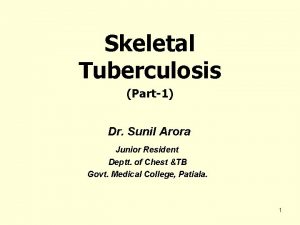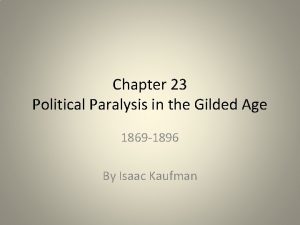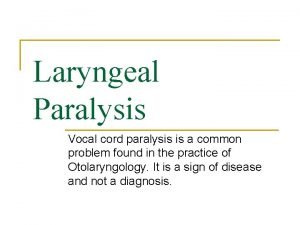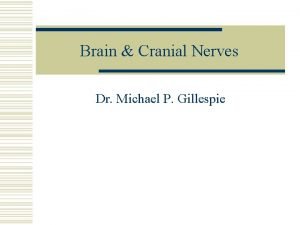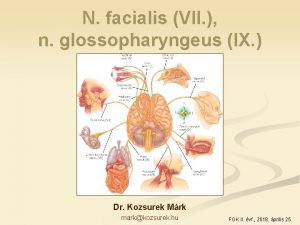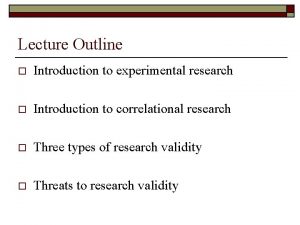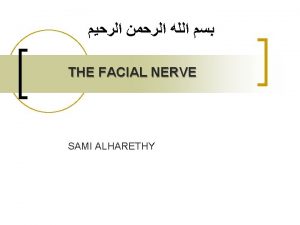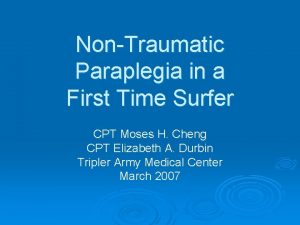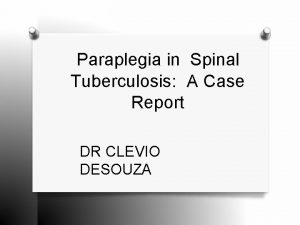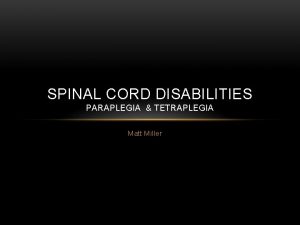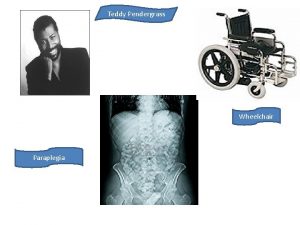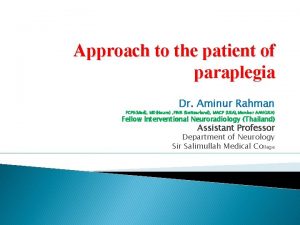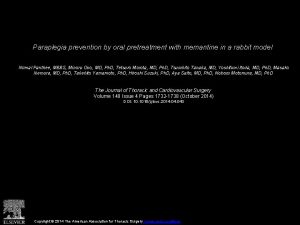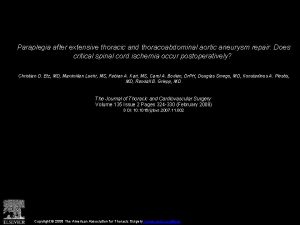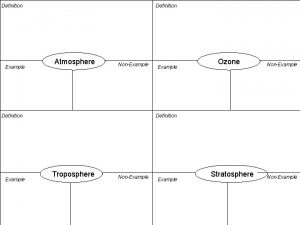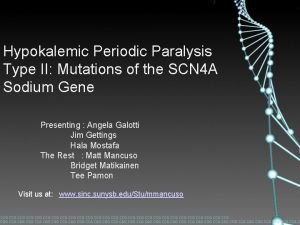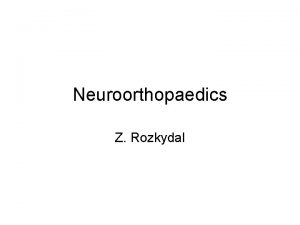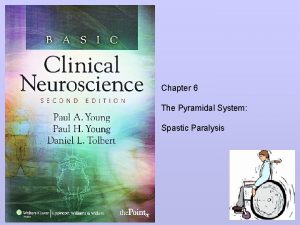Paraplegia Paraplegia n Definition Paraplegia is paralysis or


























- Slides: 26

Paraplegia

Paraplegia n Definition: Paraplegia is paralysis or weakness (paraparesis) of both lower limbs. It may be due to:

n Spinal 1. 2. 3. paraplegia may be: Focal Systemic Disseminated paraplegia

Causes of Spinal Paraplegia I-Focal Causes : A- Compression:

n Neoplastic diseases:

2 - Meningeal (extramedullary): 3 - Cord (intramedullary): -

B- Inflammatory: C- Vascular : II- SYSTEMIC CAUSES:

III-DISSEMINATED CAUSES:

CEREBRAL PARAPLEGIA A- Causes in the Parasagittal Region: (area of cortical presentation of L. L. ) B- Causes in the brain Stem :

CLINICAL PICTURE OF FOCAL PARAPLEGIA A. AT THE LEVEL OF THE LESION:

a)Posterior root affection: b)Anterior root affection:

B. BELOW THE LEVEL OF THE LESION (cord manifestations): 1 - Motor Manifestations:

n (paraplegia in extension) n (paraplegia in flexion).

2 - Sensory Manifestations a) If the cause of the lesion is extramedullary,

b) If the cause of the lesion is intramedullary,

xtramedullary opression amedullary Sensory level below which all sens. are lost Jacket sensoryy loss

3 - Sphincteric Manifestations a)In acute lesions: b)In gradual lesions:

Investigations 1) C. S. F. Examination. 2)Plain X-Ray of the Spine. 3) Myelography.

Treatment of Paraplegia I- General: - Care of the skin. - Care of the bladder.

II- Physiotherapy

III- Symptomatic Treatment a) Analgesics and sedatives for pain. b) Muscle relaxants : Valium for the spasticity. c)Vitamins and tonics.

IV- Specific Treatment n Antituberculous drugs in case of Pott's disease. n Deep X-ray in case of intra-medullary tumour. n Surgical eradication in case of extramedullary tumour.

Cauda Equina Epiconus Conus Roots Cadua Equina

CAUSES OF CAUDA EQUINA LESIONS 1 - Congenital: Spinal bifida. 2 -Traumatic: 3 -Inflammatory: Pott's disease of the lumbar vertebrae. 4 - Neoplastic: 5. Degenerative: Lumbar Spondylosis.

Neurogenic Bladder I U. M. N. L. 1. Acute : Retention with overflow 2. Gradual: a- Partial: Precipitancy b-Complete: Automatic bladder II L. M. N. L. 2. Motor atonic bladder 1. Sensory atonic bladder 3. Autonomic bladder

Thank you
 Catetere intratecale
Catetere intratecale Pott's paraplegia
Pott's paraplegia Central causes of paraplegia
Central causes of paraplegia Alternatives to surgery for laryngeal paralysis in dogs
Alternatives to surgery for laryngeal paralysis in dogs Chapter 23: political paralysis in the gilded age
Chapter 23: political paralysis in the gilded age Laryngeal nerve damage treatment
Laryngeal nerve damage treatment Chapter 23 political paralysis in the gilded age
Chapter 23 political paralysis in the gilded age Cranial nerves
Cranial nerves Paralysis homeopathic treatment
Paralysis homeopathic treatment Paralysis nervi facialis
Paralysis nervi facialis Bulbar palsy
Bulbar palsy Paralysis agitans
Paralysis agitans Paralysis cerebralis
Paralysis cerebralis Chapter 23 political paralysis in the gilded age
Chapter 23 political paralysis in the gilded age Examples of a definition essay
Examples of a definition essay What is definition of terms in research example
What is definition of terms in research example Soziale wirklichkeit definition
Soziale wirklichkeit definition Energiereserven
Energiereserven Zakat rules for gold
Zakat rules for gold Introduction of portfolio
Introduction of portfolio Bildungsroman meaning
Bildungsroman meaning Tanzimat reforms definition
Tanzimat reforms definition Coconut shy definition
Coconut shy definition Definition for internal conflict
Definition for internal conflict New lights vs old lights apush
New lights vs old lights apush Apushreview.com
Apushreview.com What is mini saga
What is mini saga

